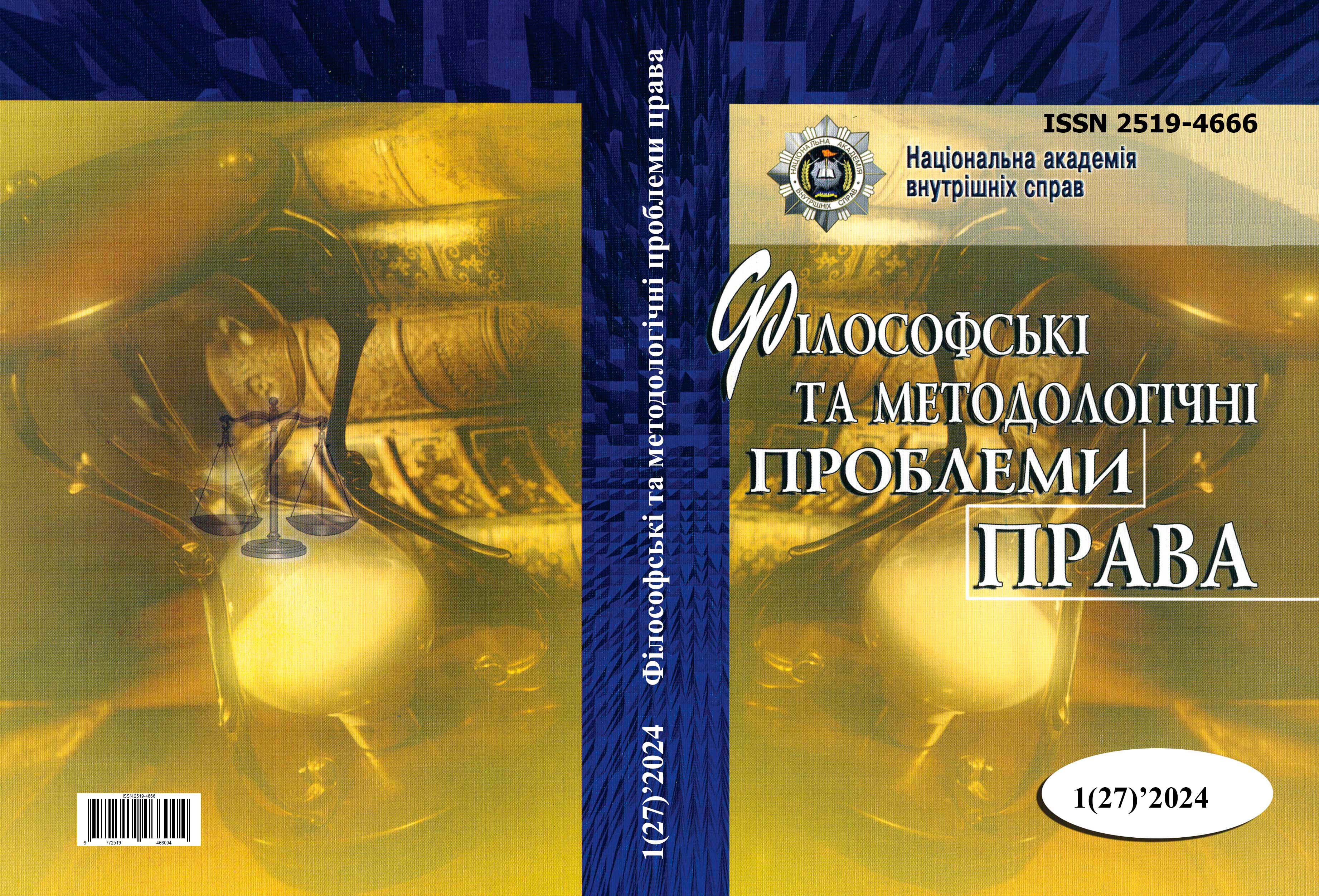The role of the Media in the Formation of Statehood in Ukraine and the USA
Abstract
Abstract. In modern realities, the greatest value is information from a wide range of sources – radio, newspapers, magazines, television and the Internet. This leads to the need to regulate the organization and activities of print and online media, which is now recognized as a priority task both in Ukraine and in other countries, in particular the United States of America. The purpose of the article is to analyze the role of the media in the formation of the statehood of these countries. To achieve the goal, the following research methods were used: analysis, synthesis, generalization, comparison, abstraction, historical, legal, etc. The constitutional and legal foundations of the organization and activity of the media in both countries were analyzed, which made it possible to thoroughly substantiate their place and status in modern civil society. Particular attention is paid to the issue of violations of the rights and status of media established in the Constitution of Ukraine, as well as to the determination of the main causes of these violations. On the basis of the conducted analysis, the classification of the media was carried out in view of the degree of dependence on the state, which will contribute to a better understanding of the specifics of their activity. The practical value of the scientific article lies in the fact that the proposed analysis of media activity in Ukraine and the United States of America from the standpoint of their influence on the formation of the state and society in general will contribute to increasing the effectiveness of media policy and the protection of freedom of speech, and therefore is important for the development of democracy and human rights.
Keywords: information; state; freedom of speech; media resources; content; policy; journalist; public.
Downloads
References
Brennan, M. (2022). Media Confidence Ratings at Record Lows. Retrieved from https://news.gallup.com/poll/394817/media-confidence-ratings-record-lows.aspx.
Burlakov, S.V. (2020). The role of mass media in the development of national information policy. Legal Science, 7(109), 45-51. doi: 10.32844/10.32844/2222-5374-2020-109-7.06.
Darcy, O. (2019). USA Today owner Gannett merges with GateHouse Media to form massive newspaper company. Retrieved from https://edition.cnn.com/2019/08/05/media/gannett-gatehouse-merger/index.html.
Farbota, M.R. (2015). Legal status of mass media in the Internet environment. Information and law, 2(14), 92-97. doi: 10.37750/2616-6798.2015.2(14).272698.
Fayvishenko, D., & Sidielnikov, D. (2023). Media design: trends and perspectives. Journalism and advertising: vectors of interaction: theses add. V International science and practice conference (pp. 18-19). Kyiv. doi: 10.31617/k.knute.2023-03-22.
Hudoshnyk, O.V. (2021). The history of journalism in the times of presentism: the experience of the USA. Communications and Communicative Technologies, 21, 13-21. doi: 10.15421/292102.
Kaplii, O.V. (2013). Classification of mass media: constitutional and legal issues. Actual problems of politics, 50, 35-46.
Kikalishvili, M.V. (2019). The role of mass media in the prevention of corruption crimes. Actual problems of domestic jurisprudence, 2, 102-106.
Larin, E.O. (2020). Legal regulation of the realization of the right to information: experience and approaches of foreign constitutionalism. Science release public and private rights, 2, 37-43. doi: 10.32844/2618-1258.2020.2.7.
Liudvyk, I.V. (2016). Mass media as an institution of civil society: constitutional and legal aspects. Bulletin of the Luhansk State University of Internal Affairs named after E. O. Didorenko, 4(76), 25-30.
Lysyniuk, M.V. (2020). The language of mass media as an indicator of the linguistic culture of modern society. Culture and modernity, 2, 33-38. doi: 10.32461/2226-0285.2.2020.222243.
Mitchuk, O., & Horbenko, H. (2024). Modern information society and the new period of journalism. Image, 1(44), 150-157. doi: 10.21272/Obraz.2024.1(44)-150-157.
Moroz, N.O. (2012). The role of the mass media in the formation of the civil society of Ukraine. Humanitarian journal, 2-3. Retrieved from https://ir.nmu.org.ua/handle/123456789/570.
Oleksiuk, T.М. (2023). International soft law standards as guidelines for balancing the right to information and the protection of national security. Law of Ukraine, 4, 86-96. doi: 10.33498/louu-2023-04-086.
Panov, A.V., Panova, A.O., & Chaibynets, M.V. (2024). Mass media of the USA. The latest technologies in the development of science, business and education: proceedings of the XVII International Scientific and Practical Conference (pp. 129-134). London. doi: 10.46299/ISG.2024.1.17.
Protsenko, O. (2018). The right and guarantees of freedom of thought and freedom of mass information. Enterprise, economy and law, 4, 156-160.
Ulianchenko, Yu.O. (2023). The essence and content of the principles of the constitutional and legal status of mass media in Ukraine and the USA. Kyiv Law Journal, 1, 58-63. doi: 10.32782/klj/2023.1.9.
Vitkova, V.S. (2021). The system of guarantees of the constitutional right to information. Juris Europensis Scientia, 2, 30-33. doi: 10.32837/chern.v0i2.199.
Volotko, E.V. (2019). The role of mass media in forming a positive image of the state. State and regions, 4(68), 82-87. doi: 10.32840/1813-3401-2019-4-14.
Yenin, M.N., & Severynchyk, O.P. (2021). Sociology of public opinion and mass media. Kyiv: KPI im. I. Sikorskoho.
Abstract views: 55 PDF Downloads: 138
Copyright (c) 2024 Philosophical and Methodological Problems of Law

This work is licensed under a Creative Commons Attribution-NonCommercial-NoDerivatives 4.0 International License.
- Authors reserve the right to authorship of their own work and transfer to the magazine the right of the first publication of this work under the terms of the Creative Commons Attribution License, which allows other persons to freely distribute published work with mandatory reference to authors of the original work and the first publication of an article in this magazine.
- Authors have the right to enter into separate additional agreements on non-exclusive dissemination of the work in the form in which it was published in the journal (for example, to post an article in the institution's repository or to publish as part of a monograph), provided that the link to the first publication of the work in this journal is maintained.
- The journal's policy allows and encourages the posting of articles by authors on the Internet (for example, in electronic storehouses of institutions or on personal websites), both before the submission of this manuscript to the editorial office and during its editorial processing, as this contributes to the creation of a productive scientific discussion and positively affects the efficiency and dynamics of citing the published work.




